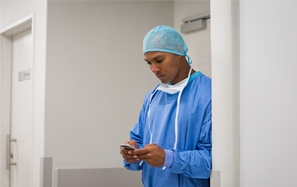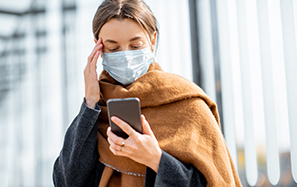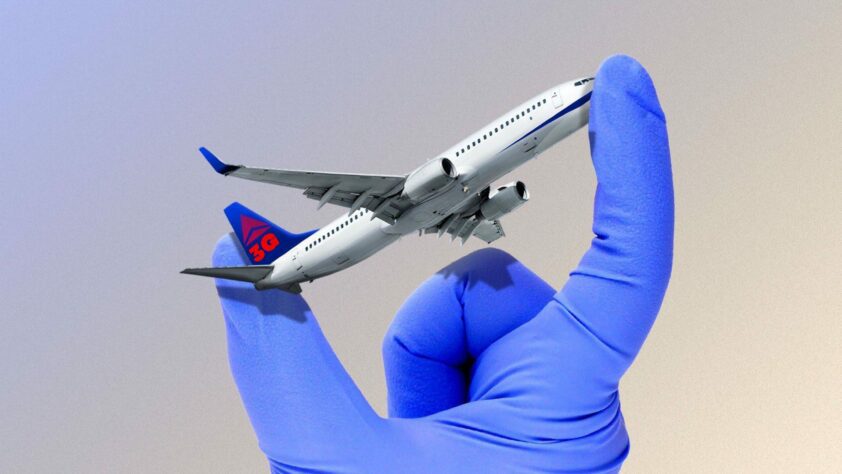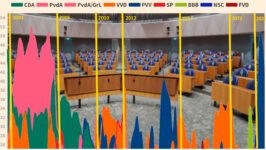On 26 November, a big experiment took place at Schiphol. Analyzing it properly can teach us a lot about the mistakes that are made in (the interpretation of) PCR tests and also that reinfections with Covid-19 are (strongly?) overestimated.
Lees volledig artikel: What the 61 positive PCR tests of South African passengers at Schiphol Airport can teach us
The information in this article, by Maurice de Hond and Anton Theunissen (virusvaria.nl), is derived from contact with some passengers and public sources.
Stuck in plane for five hours
On 26 November, around 11 am in the morning, two planes arrived at Schiphol from South Africa. One from Cape Town and the other from Johannesburg. There were more than 600 passengers on both flights. While they were on the way, panic had broken out in Europe about the Omicron variant in South Africa and they wanted to test all the passengers after arrival.
First, the passengers were kept in the aircraft for about 5 hours and then they were transported via buses to two separate areas at Schiphol (the G-pier and E-pier). Between 4 pm and 8 pm, the passengers were tested (PCR) by the GGD (the municipal health service). People waited in a long line and a small number of testers performed the tests. A journalist from the New York Times, who was one of the passengers, described both in tweets and afterwards how severe the chaos was and how little was done both on the plane and in the reception area to prevent people from infecting each other.
Around midnight, the first results came in. Ultimately, 61 of the passengers (10%) were tested positive by GGD-Kennemerland and 18 of them were diagnosed with the Omicron variant.
Vaccinated passengers did not need to be tested prior to the flight. The non-vaccinated had to submit a negative test (PCR or antigen). Most of the passengers had been vaccinated. It was like a 3G event.
Information appeared in the media that 90% of those who tested positive had been vaccinated.
The number of 61 positive tests is improbably high. Assuming that the incidence on 25 November in South Africa at that time was 2% (which is a very high estimate) and that 75% of the passengers had been vaccinated, then a result of 10 positive tests after arrival, plus or minus 3, would be the most likely outcome.
So how can it be that there were about 50 more than that?
Tested negative again just a few days later
For 49 of the 61 passengers who tested positive on 26 November, we know what happened next:
- 24 passengers tested negative on 1 December and were allowed to leave the quarantine hotel. 20 tested positive on that day.
- A Portuguese passenger tested negative with a PCR test upon departure from South Africa. She then tested positive at Schiphol. A day later, she once again tested negative via a rapid test. And two days later at a hospital in Groningen, she tested negative with a PCR test and was allowed to go home.
- One Dutch passenger had tested positive at Schiphol. Four days later, she and her two travel companions tested negative at the GGD.
- Three passengers took rapid tests that came back negative shortly after that Friday.
Of the remaining 12 who were not in the quarantine hotel, we do not have further information.
How could 61 passengers have been tested positive with a PCR test?
As indicated, it is extremely unlikely that 61 (nearly 10%) passengers were infected at the time of departure from South Africa. The incidence in South Africa at the time was far too low for that. (For example, the Netherlands now has an incidence of 2%).
But how could there have been 61 positive PCR results on 26 November (and 18 Omicron)? And shortly after those positive results, a majority already no longer tested positive (29 of the 49 for which the results are known)?
The following seems like a very plausible explanation and teaches us more about the value of the PCR test and about our immune system:
This information is important:
-
Multiples of the sample
In the Netherlands, the PCR test is performed with high CT values (up to 45). The CT value (Cycle-Threshold) is the number of times the sample – taken from the passenger – has been multiplied in order to examine it for the possible presence of virus. The lower the value if the virus is found, the more virus particles were present in the original sample. What is important to realize here is that a CT value of 30 means that the original sample has been augmented by a factor of 1 million or more. Here is a explanation of how the CT values work.
There is a lot of discussion about those CT values. The New York Times published an extensive article on this on 29 August 2020. Various experts indicate that values above 35 no longer tell us whether the person in question is actually infected, let alone infectious to others. Because in that case, virtually no virus was found. For example, the article indicates that at a testing laboratory in New York, 43% of those who tested positive after 40 cycles were not positive at 35 cycles.
And this is the development of the CT value of a number of patients, who received multiple PCR tests. It is easy to see that over time, the CT value has to increase to be able to find the virus.
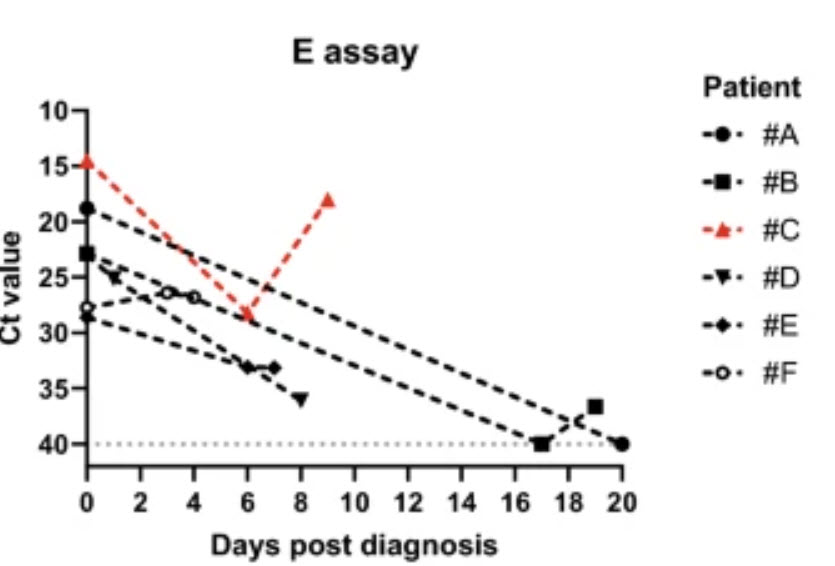
Other studies showed that tested individuals with symptoms had CT values typically below 30.
-
Viral doses
The viral dosage plays a major role in whether or not you become infected. This study by Prof. Streeck at a carnival meeting in Gangelt in February 2020 clearly shows that the longer people were in that room, the greater the chance they had to get infected, but also the more symptoms they had. Whereby young people apparently had a higher limit than older people.
But this also means that other people who were in that room received viral doses that were too low for them to end up being infected by it (for whatever reason). So everyone present at that carnival gathering must have been exposed to suspended virus particles and inhaled them!
A plausible explanation
PCR tests are known to have a chance of testing positive for weeks after an infection has been contracted. There may still be “old virus particles” in the nose or throat that are then detected. In Madrid, an overview was made of the determined CT values in relation to the development of the number of positive tests. This covers the period from July 2020 to March 2021. In yellow, you can see the number of positive tests per day. In blue is the percentage of PCR tests with a CT value above 30. It is good to see the increase in that percentage when the wave is past its peak. And a drop in that percentage as a wave forms.
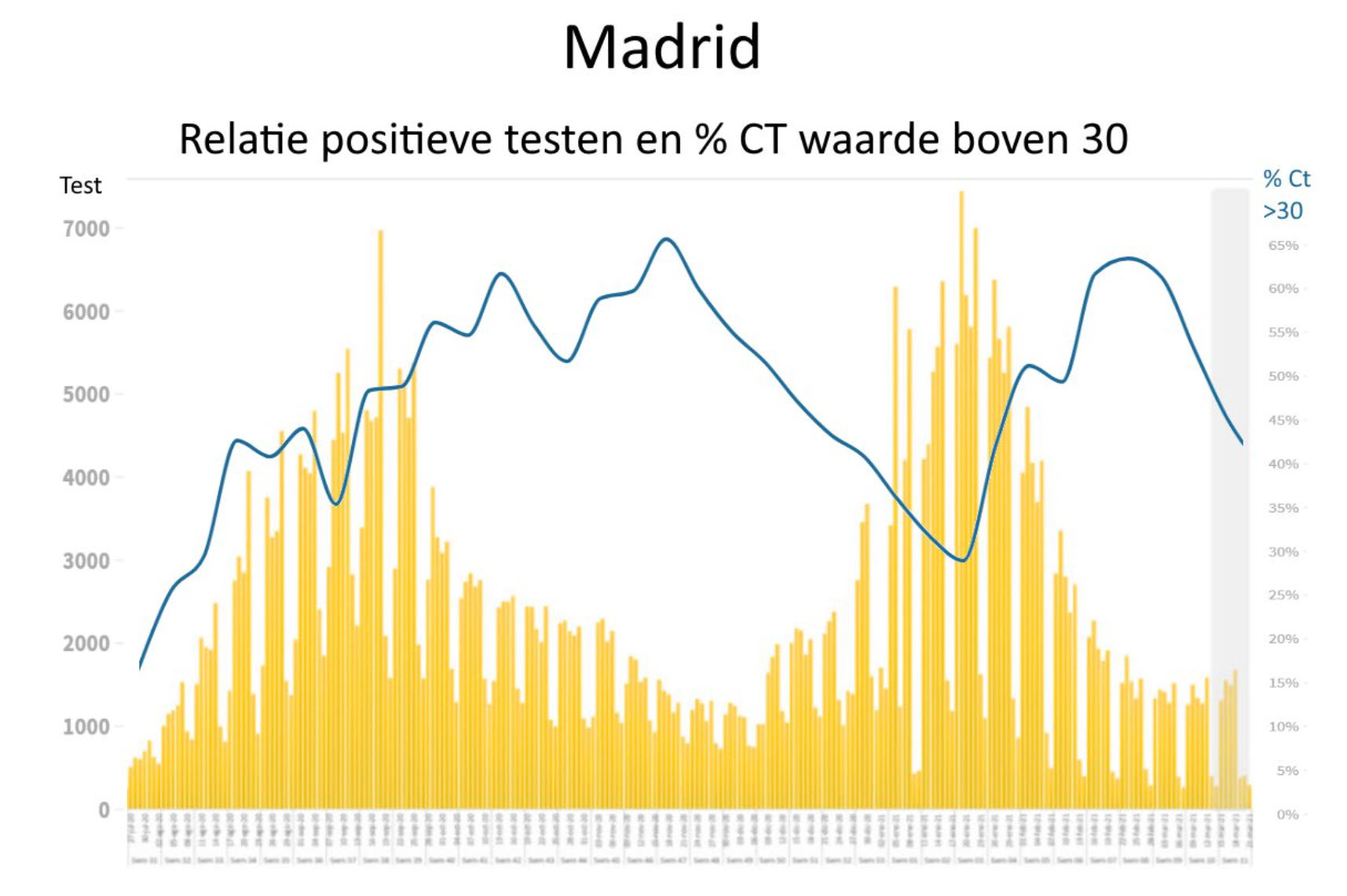
In the Netherlands, the PCR test is performed with CT values above 40. This means the chance that people with very few virus particles test positive is a lot higher, as shown in the article in the New York Times and in this graph from Madrid. Because the yellow bars would have been a lot lower if they had stopped at a CT value of 30 in Madrid.
Is the high percentage of passengers with a positive result due to “old” virus particles that were found? But how is it then that their second test, shortly after the one at Schiphol, produced such a large number of negative PCR test results?
The explanation we have for this is:
Most of the virus particles found in the PCR test at Schiphol Airport were not virus particles produced by the passenger themselves, but virus particles inhaled by the passenger that were still present in their nose or throat.
This would have happened in the following way:
Before the PCR test was performed, the passengers had sat in a waiting plane for about 5 hours (after an 11-hour flight). After that, they were briefly on a bus, and then stood in line for some time before being tested (depending on when it was their turn).
If our calculations are correct, a total of between 7 and 13 people may have been present on the two flights who were infected prior to the flight and may have released virus particles into the air (aerosols). During those 5 hours on the ground in the plane (and perhaps in the bus and then in the reception area), it is almost inevitable that the other people present would have inhaled the airborne virus particles. Even if they had then exceeded the viral doses to actually be infected by them, they would not be able to themselves spread virus particles produced in their own bodies until 2.5 days later.
It seems very likely that a large number of those present inhaled a limited number of virus particles in the time between landing and getting tested. However, there is no reason for most of them to have exceeded the viral doses to eventually become infected.
And that gets us to the core of the issue:
Because the PCR tests are very sensitive, even a small number of virus particles in the nose or throat of the passenger can yield a positive result.
As we know, the presence of the virus does not immediately mean infection. Because the time of testing was immediately after an infectious situation, the test was too early to say anything about infection or contagiousness. The PCR test simply detected that one had inhaled virus particles.
The fact that people tested negative just few days after the positive PCR test at Schiphol supports the assumption that this is what must have happened for many of those 61 people, and that the immune system of many was able to eliminate a limited dose of the virus almost immediately, or in any case within a few days, without infection. And so, a few days later, no more virus particles were found and the relevant passenger had not become infected, nor a producer of virus particles.
Among the 61 people who tested positive, there would have been about 10 who produced the virus themselves and were therefore “rightly” positive, while the rest simply had virus particles in their nose or throat. Those virus particles were not produced by the carrier themselves, but came from outside!
Of the 26 passengers who received a negative PCR test between 29 November and 1 December, the vast majority, if not all, will have been in the group that had not “produced” the virus themselves.
If the CT value per passenger could be published for each test performed at Schiphol and for the following week, our description of this possible course of events could be fully substantiated. Passengers who arrived at Schiphol on Friday with a CT value below 30 are those who were the producers of the virus (lots of virus) and those with a CT value above 35 are the recipients of the virus.
If one wants to assess the status of the 20 individuals who had still received a positive test on 1 December at the hotel, it would be informative to compare the CT value of 1 December with that of 26 November. After all, it could be that some people on the 26th inhaled viral doses to such an extent that they really did get infected. But the virus found had not yet been produced by that person. About three days later, this should lead to that person producing the virus themselves, and thus a much lower CT value.
So among those 20 who had not yet tested negative one week after arrival may have been passengers who had a high CT value on 26 November and a significantly lower value on 1 December. That means they would have been infected on the 26th.
And those who had a high CT value on 26 November and a lower one on 1 December? Those would be the people who were already infected in South Africa and transmitted the virus to the other passengers. Or they would be people who, for one reason or another, had inhaled more virus particles (talked a lot on the plane with an infectious neighbor) but nevertheless seem to have successfully fought off the virus.
Perhaps this information, combined with the location of the passengers in the aircraft, could provide even more interesting additional information. In any case, for two people who had sat next to each other on the plane from Cape Town and had both tested positive at Schiphol, we know that they had no symptoms at all and one tested negative with a rapid test on Monday and the other tested negative with a PCR test on Friday.
By analyzing the CT-values of the PCR tests of Friday 26 November and the new tests in the days after, we can form a good picture of what happened.
This explanation from Dr. Clare Crage also provides a substantiation for this.
And that gets us to the core of the issue:
Because the PCR tests are very sensitive, even a small number of virus particles in the nose or throat of the passenger can yield a positive result.
As we know, the presence of the virus does not immediately mean infection. Because the time of testing was immediately after an infectious situation, the test was too early to say anything about infection or contagiousness. The PCR test simply detected that one had inhaled virus particles.
The fact that people tested negative just few days after the positive PCR test at Schiphol supports the assumption that this is what must have happened for many of those 61 people, and that the immune system of many was able to eliminate a limited dose of the virus almost immediately, or in any case within a few days, without infection. And so, a few days later, no more virus particles were found and the relevant passenger had not become infected, nor a producer of virus particles.
Among the 61 people who tested positive, there would have been about 10 who produced the virus themselves and were therefore “rightly” positive, while the rest simply had virus particles in their nose or throat. Those virus particles were not produced by the carrier themselves, but came from outside!
Of the 26 passengers who received a negative PCR test between 29 November and 1 December, the vast majority, if not all, will have been in the group that had not “produced” the virus themselves.
If the CT value per passenger could be published for each test performed at Schiphol and for the following week, our description of this possible course of events could be fully substantiated. Passengers who arrived at Schiphol on Friday with a CT value below 30 are those who were the producers of the virus (lots of virus) and those with a CT value above 35 are the recipients of the virus.
If one wants to assess the status of the 20 individuals who had still received a positive test on 1 December at the hotel, it would be informative to compare the CT value of 1 December with that of 26 November. After all, it could be that some people on the 26th inhaled viral doses to such an extent that they really did get infected. But the virus found had not yet been produced by that person. About three days later, this should lead to that person producing the virus themselves, and thus a much lower CT value.
So among those 20 who had not yet tested negative one week after arrival may have been passengers who had a high CT value on 26 November and a significantly lower value on 1 December. That means they would have been infected on the 26th.
And those who had a high CT value on 26 November and a lower one on 1 December? Those would be the people who were already infected in South Africa and transmitted the virus to the other passengers. Or they would be people who, for one reason or another, had inhaled more virus particles (talked a lot on the plane with an infectious neighbor) but nevertheless seem to have successfully fought off the virus.
Perhaps this information, combined with the location of the passengers in the aircraft, could provide even more interesting additional information. In any case, for two people who had sat next to each other on the plane from Cape Town and had both tested positive at Schiphol, we know that they had no symptoms at all and one tested negative with a rapid test on Monday and the other tested negative with a PCR test on Friday.
By analyzing the CT-values of the PCR tests of Friday 26 November and the new tests in the days after, we can form a good picture of what happened.
The major implications of this finding
The above also shows that a positive PCR test can be explained in many ways. And that it is very important to disclose the CT value for each test! Both for those involved and for the analysis of how the virus is spreading.
But perhaps more important is the following consequence of testing positive due to inhaled virus particles, without becoming infected.
A person is falsely identified as having experienced a Covid-19 infection. And if such a person “really” tests positive much later, it is considered a reinfection, when in reality, it is only the first infection.
PCR tests with high CT values thus artificially increase the number of reinfections and underestimate the protective effect of the immune system after an infection.
There is every reason to carry out an extensive analysis of the PCR results of the passengers on these two flights on 26 November. Both for their first PCR test and the next. Plus information about the seat numbers in the plane and the location relative to those who had a low CT value after arriving at Schiphol and were the people who introduced the virus particles into the room. If the information about the 18 people who carried the Omicron variant would also be linked to this, the picture would become even clearer.
We would be very grateful if you made a small voluntary contribution every now and then via our donation page.

